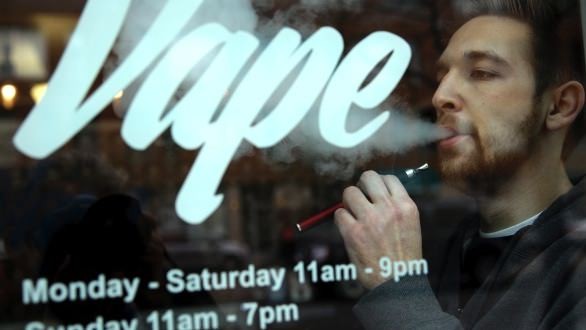You see them everywhere now. E-cigarettes or vaporizers. Entire cultural groups have sprung up surrounding the market. Vapers are omnipresent on social media, and there are even the equivalent of of old-school tupperware parties for the devices. Granted, makers of the vaporizers know that sex sells, so you find a number of tradeshow models showcasing the devices.
According to an article from Reuters, the U.S. Food and Drug Administration (FDA) is spending $270 million on these and 45 other research projects to determine the risks of e-cigarettes before millions more Americans use the devices.
“They want data and they want it yesterday,” said Dr Suchitra Krishnan-Sarin of Yale University, who is leading four projects, to Reuters.
However, final results may not be available before 2018, researchers leading the FDA-funded projects told the news organization. That timetable, which has not been reported before, underscores how the slow pace of science is contributing to a regulatory vacuum, allowing e-cigarette makers to sell their products virtually unchallenged.
To be sure, studies of e-cigarettes not funded by the FDA are also under way, and the agency can factor those results into any action it takes. But the FDA chose these 48 projects because they address questions central to future regulations.
The e-cigarette industry, which Wells Fargo Securities estimates will make $2 billion in global sales this year, says the FDA must wait for the results of the research before it issues any regulations, or manufacturers risk being driven out of business by unproven fears about their products.
The missing science includes basic questions such as what compounds are in the vapor produced by e-cigarettes. It also includes complicated questions like whether flavors such as butterscotch and bubble gum entice children to vape, how e-cigarette displays in online stores affect teenagers’ desire to buy vaping liquid, and, perhaps most crucial, whether e-cigarettes will reduce the number of smokers or produce millions of new ones.
The Yale team, for instance, will study whether menthol and flavors such as chocolate and cherry increase the appeal of e-cigarettes, especially to 16- to 18-year-old smokers or “dual users” who both smoke and vape. If that turns out to be the case, the FDA would have scientific support for regulating.
In March, NACS issued a statement of position that encourages stores selling e-cigarettes to adopt, as a best practice, a policy of treating these products as age restricted and subjecting them to the same age-verification procedures as those applicable to tobacco products.
Agencies/Canadajournal

 Canada Journal – News of the World Articles and videos to bring you the biggest Canadian news stories from across the country every day
Canada Journal – News of the World Articles and videos to bring you the biggest Canadian news stories from across the country every day

